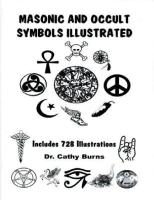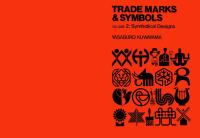England National Symbols [PDF]
National Symbols [ENGLAND] Flags The national flag of England, known as St. George's Cross, has been England's national
54 1 370KB
Papiere empfehlen
![England National Symbols [PDF]](https://vdoc.tips/img/200x200/england-national-symbols.jpg)
- Author / Uploaded
- DéboraFernandes
Datei wird geladen, bitte warten...
Zitiervorschau
National Symbols [ENGLAND]
Flags The national flag of England, known as St. George's Cross, has been England's national flag since the 13th century. Originally the flag was used by the maritime state the Republic of Genoa. The English monarch paid a tribute to the Doge of Genoa from 1190 onwards, so that English ships could fly the flag as a means of protection when entering the Mediterranean. A red cross acted as a symbol for many Crusaders in the 12th and 13th centuries. It became associated with Saint George, along with countries and cities, which claimed him as their patron saint and used his cross as a banner.Since 1606 the St George's Cross has formed part of the design of the Union Flag, a Pan-British flag designed by King James I. The Royal Banner of England (also known as the Banner of the Royal Arms, the Banner of the King of England, or by the misnomer of the Royal Standard of England) is the English banner of arms, that features the Royal Arms of England. This Royal Banner differs from England's national flag, St George's Cross, in that it does not represent any particular area or land, but rather symbolises the sovereignty vested in the rulers thereof.
Heraldry The Royal Arms of England is a coat of arms symbolising England and the English monarchs. Designed in the High Middle Ages, the Royal Arms was subject to significant alteration as the territory, politics and rule of the Kingdom of England shifted throughout the Middle Ages. However, the enduring blazon, or technical description, is "Gules three lions passant guardant in pale Or armed and langued Azure" meaning three horizontally positioned identical gold lions facing the observer, with blue tongues and claws, on a deep red background. Although officially subsumed into the heraldry of the British Royal Family in 1707, the historic Royal Arms featuring three lions continues to represent England on several coins of the pound sterling, forms the basis of several emblems of English national sports teams (such as the England national football team), and endures as one of the most recognisable national symbols of England. The Tudor rose, which takes its name from the Tudor dynasty, was adopted as a national emblem of England around the time of the Wars of the Roses as a symbol of peace. It is a syncretic symbol in that it merged the white rose of the Yorkists and the red rose of the Lancastrians—cadet branches of the Plantagenets who went to war over control of the royal house. It is also known as the Rose of England.
National Symbols [ENGLAND] St Edward's Crown was one of the English Crown Jewels and remains one of the senior British Crown Jewels, being the official coronation crown used in the coronation of first English, then British, and finally Commonwealth realms monarchs. As such, two-dimensional representations of the crown are used in coats of arms, badges, and various other insignia throughout the Commonwealth realms to indicate the authority of the reigning sovereign.
Flora and fauna The Lion is a national animal of England. Lion was the nickname of England's medieval warrior rulers with a reputation for bravery, such as Richard I of England, known as Richard the Lionheart. Lions are frequently depicted in English heraldry, either as a device on shields themselves, or as supporters. They also appear in sculpture, and sites of national importance, such as Trafalgar Square. The lion is used as a symbol of English sporting teams, such as the England national football team.
The rose is the national flower of England. It is usually red,and is used, for instance, in the emblems of the English Golf Union and England national rugby union team.
The oak is the national tree of England representing strength and endurance. The term Royal Oak is used to denote the escape of King Charles II from the grasps of the parliamentarians after his father's execution; he hid in an oak tree to avoid detection before making it safely into exile. The Major Oak is an 800–1000 year old oak in Sherwood Forest, famed as the alleged principal hideout of Robin Hood.
Food and drink Fish and chips is a widely consumed part of English cuisine, and is symbolic of England
Tea is symbolic of England. In 2006, a government sponsored survey confirmed that a cup of tea constituted a national symbol of England
National Symbols [ENGLAND]









